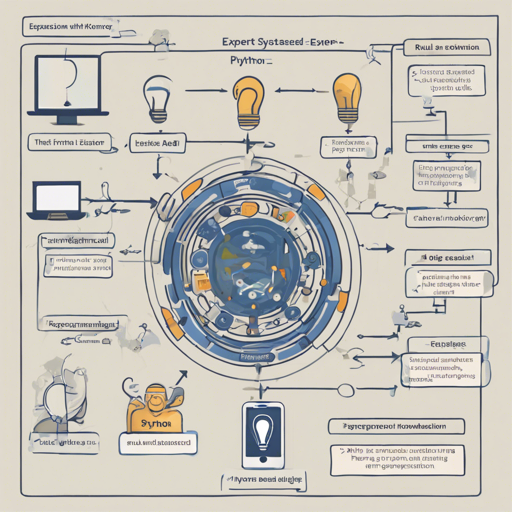Are you interested in creating an intelligent application that can infer conclusions based on a set of rules? If so, you’re in the right place! In this guide, we will walk you through the essentials of developing a Rule-Based Expert System using Python, integrating OpenCV for image processing and wxPython for the graphical user interface (GUI).
Understanding the Components
Your Rule-Based Expert System can be visualized as a smart detective that gathers evidence, consults its rulebook, and draws conclusions based on the data at hand. It comprises four essential components:
- Knowledge Base: This houses the rules and facts essential for making decisions.
- Database: Consists of raw facts that the expert system will utilize.
- Inference Engine: Acts as the brain, applying the rules to the facts to infer conclusions.
- User Interface: The front-end through which users interact with the system.
For a clearer view, check out the structure diagram below:
Diving into Rules
Ah, the rules! Think of them as the legal statutes your expert system follows. Each rule can be represented as:
RuleID(), antecedent(), consequent(), description()For example:
IF: [the shape is triangle, lines are all equal]
THEN: the shape is equilateral triangle
DESCRIPTION: equilateral triangleImplementing Image Handling with OpenCV
This is where things get interesting! By integrating OpenCV, your system can analyze images. Think of it as a chef that not only knows how to cook but also tastes the food to check its quality. Here are a few functions you’ll employ:
cv2.HoughLines()cv2.findContours()cv2.approxPolyDP()
Building the GUI with wxPython
This is where the user can input data, and where the results are displayed. The user interface ensures that our intelligent system is user-friendly and accessible. Check out some examples of GUI designs:
Testing Your Expert System
Now comes the moment of truth! Run your expert system with various shapes and see how well it identifies them. You can use images of different triangles, quadrilaterals, pentagons, and hexagons:
Troubleshooting
If you encounter issues during development, here are some troubleshooting tips:
- Make sure all dependencies for wxPython and OpenCV are installed correctly.
- Check your rules for any logical errors that might lead to incorrect conclusions.
- Ensure that your images are in the proper format and size.
For more insights, updates, or to collaborate on AI development projects, stay connected with fxis.ai.
Conclusion
Congratulations! You now have a basic understanding of how to create a Rule-Based Expert System using Python, OpenCV, and wxPython. Keep refining your skills and adding more functionality to your system!
At fxis.ai, we believe that such advancements are crucial for the future of AI, as they enable more comprehensive and effective solutions. Our team is continually exploring new methodologies to push the envelope in artificial intelligence, ensuring that our clients benefit from the latest technological innovations.

